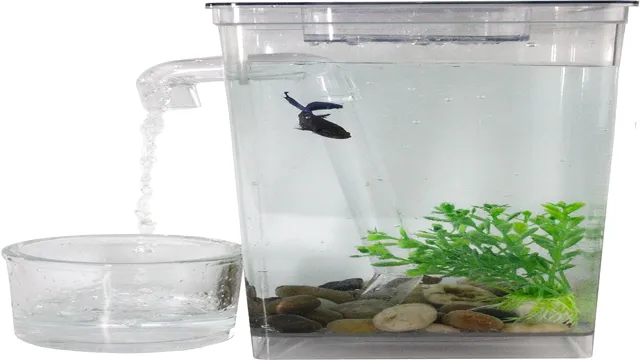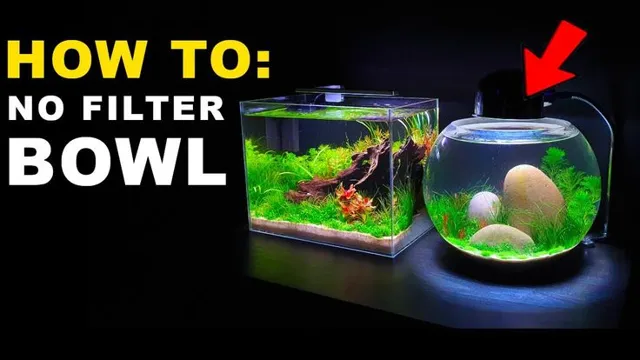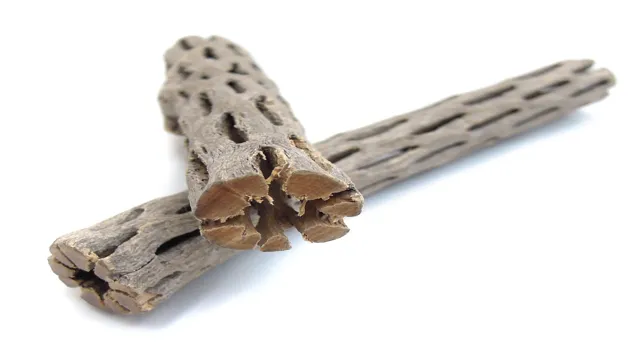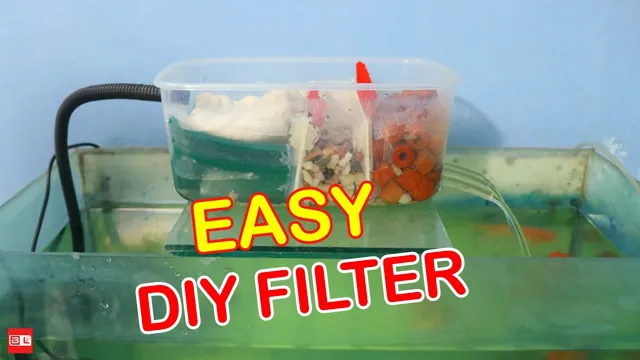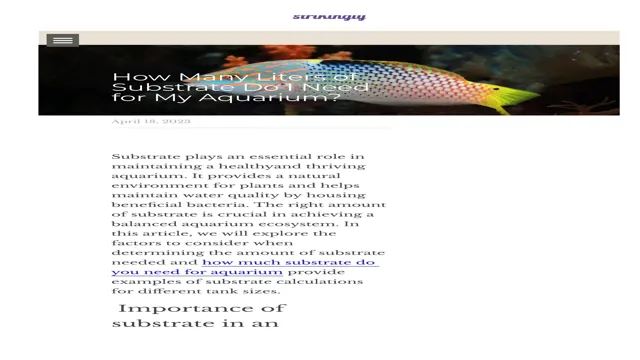As aquarium lovers, we all know the challenge of keeping our tanks clean. The process can be downright time-consuming and frustrating. The good news is that there’s a solution: a self-cleaning aquarium.
With this type of tank, you no longer have to worry about manually cleaning the tank or employing maintenance services. Instead, the aquarium cleans itself, allowing you to focus on enjoying your fish. And best of all, creating a self-cleaning aquarium is easier than you may think.
In this article, we’ll guide you through the steps of making a self-cleaning aquarium that will save you time and energy, and keep your fish happy and healthy. From deciding on the appropriate equipment to selecting the right cleaning methods, we’ve got you covered. Let’s dive in!
Choosing an Aquarium and Filter System
If you’re a fan of aquariums, you know that keeping them clean can be a hassle. That’s why many people are turning to self-cleaning aquariums. But how do you make one? The first step is to choose the right aquarium, one that’s big enough for your fish and has a built-in filter system.
It’s important to consider the type of fish you want to keep and their needs when selecting an aquarium. Once you have the right aquarium, you’ll need to choose a filter system that will keep the water clean for your fish. There are many options available, including hang-on-back filters, canister filters, and sponge filters, so be sure to do your research to find the best option for you.
Finally, consider adding live plants to your self-cleaning aquarium, as they can help keep the water clean and remove harmful toxins. With the right equipment and some careful consideration, you can create a self-cleaning aquarium that requires minimal maintenance and provides a healthy environment for your fish to thrive.
Selecting the Right Size Aquarium
When it comes to selecting the right size aquarium, there are a few factors you should consider. First and foremost, you want to make sure the tank size is appropriate for the type and number of fish you plan to keep. A good rule of thumb is to allow one gallon of water per inch of adult fish.
Additionally, you should consider the space you have available in your home for the tank and its accompanying filter system. Speaking of filters, it’s crucial to choose the right filter for your tank size and fish species. A filter is essential to maintain the health of your aquatic pets by keeping the water clean and oxygenated.
By choosing the right size aquarium and filter system, you’ll create a healthy and happy environment for your fish to thrive in.

Choosing a High-Quality Filter System
When it comes to choosing an aquarium and filter system for your aquatic pets, it’s essential to prioritize high-quality equipment. Not all filters are created equal, and investing in a reliable filter system can make all the difference in maintaining a healthy and thriving underwater environment. A high-quality filter should offer both mechanical and biological filtration, helping to remove debris, waste, and other harmful substances, while also promoting beneficial bacteria growth that supports the ecosystem.
When considering your options, focus on finding a filter that is appropriate in size and flow rate for your aquarium, as well as one that is easy to maintain and has a low noise level. By choosing the right equipment, you’ll ensure that your aquatic pets have the best chance for long-term health and happiness, creating a beautiful and sustainable underwater world in your own space.
Adding Self-Cleaning Features
Have you ever wished you could have an aquarium that could clean itself? Well, now you can! There are several ways to add self-cleaning features to your aquarium, making it much easier to maintain. One option is to invest in a self-cleaning fish tank. These tanks come with built-in filters and mechanisms that help to keep the water clean and clear. (See Also: How to Be an Animal Trainer at the Georgia Aquarium: Tips and Advice for Aspiring Trainers)
Another option is to add live plants to your aquarium. Plants not only add beauty and texture to your tank, but they also help to keep the water clean by absorbing toxins and excess nutrients. A third option is to add a cleaning crew to your aquarium.
Certain species of snails and shrimp are great at eating algae and other debris, helping to keep your tank clean. No matter which option you choose, you can feel confident that your aquarium will be much easier to maintain with these self-cleaning features. So why not give it a try? Your fish (and your cleaning routine) will thank you!
Installing an Automatic Feeder
If you’re tired of constantly cleaning up after your pet, then adding self-cleaning features to your automatic feeder may be a game-changer. With a self-cleaning automatic feeder, you won’t have to worry about old food or bacteria building up, which can ultimately lead to health problems for your furry friend. Many self-cleaning feeders come equipped with a detachable tray that makes cleaning a breeze.
Additionally, some models have a sterilization function, which can kill any lingering bacteria and ensure your pet’s food is always fresh and safe. By adding self-cleaning features to your automatic feeder, you can enjoy a cleaner home while ensuring that your pet is getting the nourishment they need to thrive.
Incorporating a Biological Filtration System
If you’re looking to improve the quality of your aquarium’s water with a biological filtration system, consider adding self-cleaning features to make maintenance a breeze. One option is to incorporate a protein skimmer into your filtration setup. This device uses small bubbles to collect organic waste and debris from the water surface, which is then removed through a collection cup.
Another self-cleaning feature to consider is a gravel vacuum. This tool allows you to easily remove excess food, waste, and debris that has settled on the bottom of your tank. By incorporating these self-cleaning features into your biological filtration system, you’ll not only improve water quality but also reduce the amount of time and effort you spend on maintenance.
So why not give your aquarium and its inhabitants the best living environment possible?
Adding Live Plants and Algae Eaters
Adding self-cleaning features to your aquarium is a smart and easy way to simplify maintenance. One of the best ways to do this is by adding live plants to your aquarium. Live plants consume the same nutrients that algae uses to grow, so they help to reduce the amount of algae in your tank, preventing it from taking over.
Not only do they help keep your tank clean, but they also add a beautiful natural touch to your aquarium. Another option for self-cleaning features is algae eaters. Algae eaters can come in many forms, such as snails, shrimp, and fish.
They help to clean up algae and other unwanted debris in your aquarium, keeping it looking pristine and healthy. By incorporating live plants and algae eaters into your aquarium, you’ll be creating a self-sustaining ecosystem that reduces the amount of maintenance required to keep it clean. (See Also: How to Become a Biologist at an Aquarium: A Step-by-Step Guide for Aspiring Biologists)
Maintenance Tips for a Self-Cleaning Aquarium
Maintaining a self-cleaning aquarium can be simpler than you think. Generally, self-cleaning aquariums use systems that eliminate waste, excessive food, and other debris automatically. But, that doesn’t mean you can ignore it completely.
To keep your self-cleaning aquarium functioning efficiently, there are a few things you can do. First, make sure to check the water levels and temperature regularly. Secondly, check the filters and reservoirs to ensure they are working correctly.
Thirdly, monitor the substrate and plants for any signs of damage or decay, and remove any debris manually if needed. Lastly, avoid overfeeding your fish and only add enough food that can be consumed within 2-3 minutes. By following these maintenance tips, you can ensure that your self-cleaning aquarium stays healthy and balanced, making it a joy to watch your aquatic pets swim and thrive.
So why not create your self-cleaning aquarium today and enjoy the wonders of underwater world with minimum hassle!
Performing Regular Water Changes
Regular water changes are essential for maintaining a self-cleaning aquarium. It may seem like a chore, but it’s actually a simple and effective way of keeping your fish happy and healthy. Generally, you want to aim for changing around 10-20% of the water every one to two weeks.
This helps to reduce the build-up of harmful substances such as ammonia and nitrite, which can cause stress and disease in your fish. When performing a water change, make sure to use a dechlorinator to remove any chlorine or other chemicals that might be present in the tap water. Additionally, you can use a gravel vacuum to remove any debris or waste that may have accumulated on the substrate.
By regularly performing water changes, you can maintain a clean and healthy environment for your aquatic pets, ultimately reducing the need for excessive cleaning and maintenance.
Maintaining Proper Water Chemistry
Maintaining a self-cleaning aquarium can be a breeze with these maintenance tips. One of the most important aspects of keeping a healthy environment for your aquatic pets is proper water chemistry. This means regularly testing the pH levels, ammonia, nitrate, and nitrite levels, and keeping them in balance.
You can use water conditioners and additives to assist with maintaining this balance. Additionally, regularly cleaning the filter and replacing the filter media will help remove waste and debris from the water. Remember to never completely change the water in the tank, as this can disrupt the balance of the ecosystem.
Instead, aim to replace about 10-20% of the water each week. With these maintenance tips, you can ensure that your self-cleaning aquarium remains a healthy and thriving environment for your fish and other aquatic pets.
Conclusion and Final Thoughts
In conclusion, a self-cleaning aquarium may seem like the stuff of science fiction, but with a little bit of ingenuity and some clever techniques, it’s entirely possible to create a low-maintenance fish tank that requires minimal effort to keep clean. Whether you opt for a specialized filtration system, smart automation technology, or simply choose hardy, low-maintenance fish and plants, the key is to think outside the box and find creative solutions that work for your unique needs. So embrace your inner inventor, dare to dream big, and who knows – you might just create the next breakthrough in self-cleaning aquarium technology!” (See Also: How to Convert Aquarium to Aquaponics: Step-by-Step Guide for Beginners)
FAQs
What are some benefits of having a self-cleaning aquarium?
Self-cleaning aquariums reduce the amount of maintenance needed, provide a healthier environment for fish, and can save time and money in the long run.
How does a self-cleaning aquarium work?
Self-cleaning aquariums typically use a filtration system that removes waste and debris from the water, often with the help of beneficial bacteria. Some may also incorporate features like automatic water changes and algae control.
Are self-cleaning aquariums suitable for all types of fish?
Self-cleaning aquariums can be appropriate for many types of fish, but it’s important to research the specific needs of your fish and ensure that the aquarium provides adequate space, water quality, and filtration.
Do self-cleaning aquariums require any special maintenance?
While self-cleaning aquariums may reduce the amount of maintenance needed overall, they still require regular monitoring and occasional cleaning to ensure that the filtration system is functioning properly and the water quality remains optimal.
Can you make your own self-cleaning aquarium?
It is possible to create a DIY self-cleaning aquarium using materials like sponge filters, plants, and sand, but it’s important to follow proper guidelines and ensure that the aquarium provides a suitable environment for fish.
How much do self-cleaning aquariums typically cost?
The cost of a self-cleaning aquarium can vary widely depending on the size, features, and quality of the equipment. Some models may cost several hundred dollars, while others may be more affordable.
What are some common mistakes to avoid when using a self-cleaning aquarium?
Some common mistakes include overstocking the aquarium, failing to monitor water quality regularly, neglecting to perform necessary maintenance tasks, and not researching the specific needs of your fish species.

